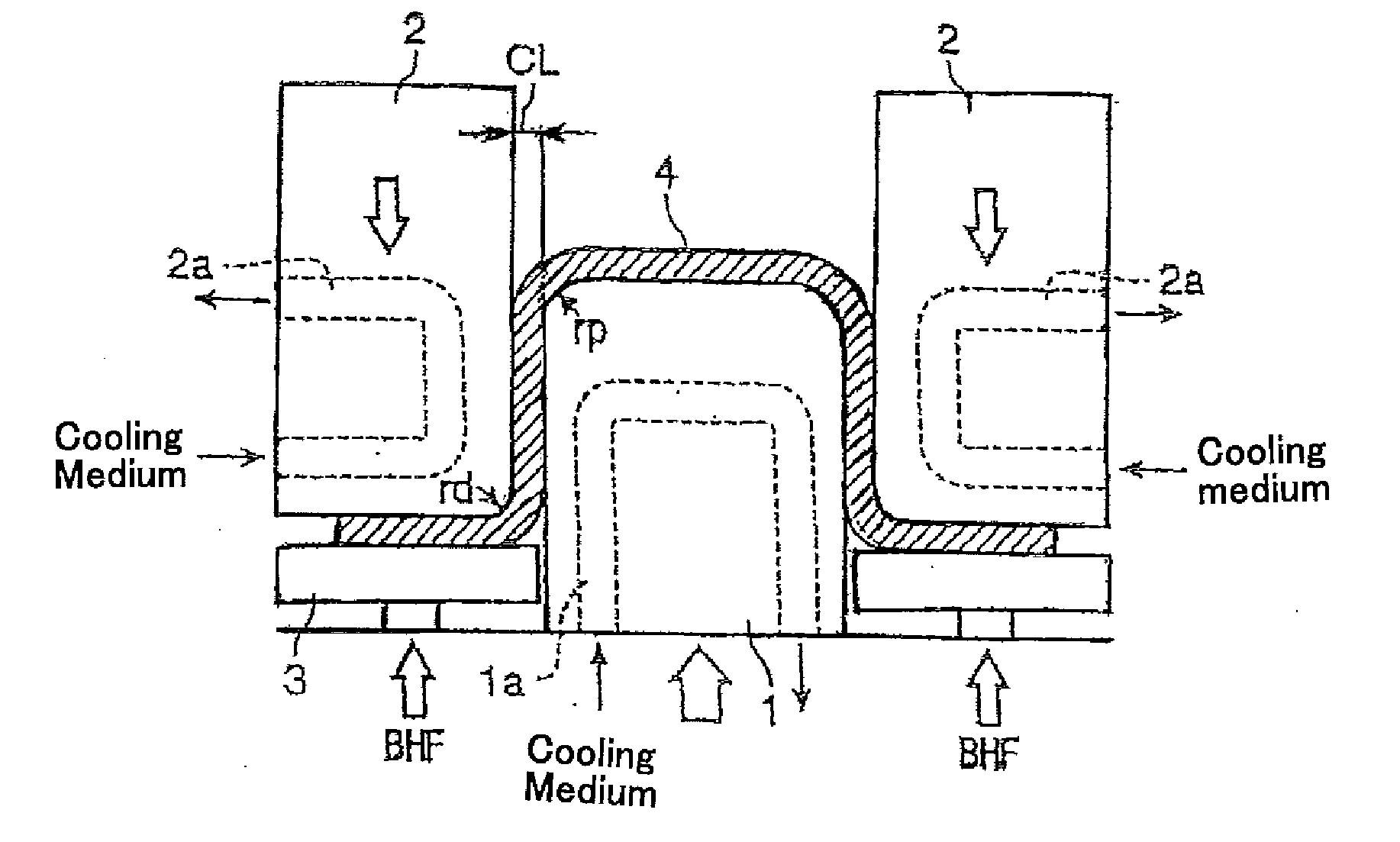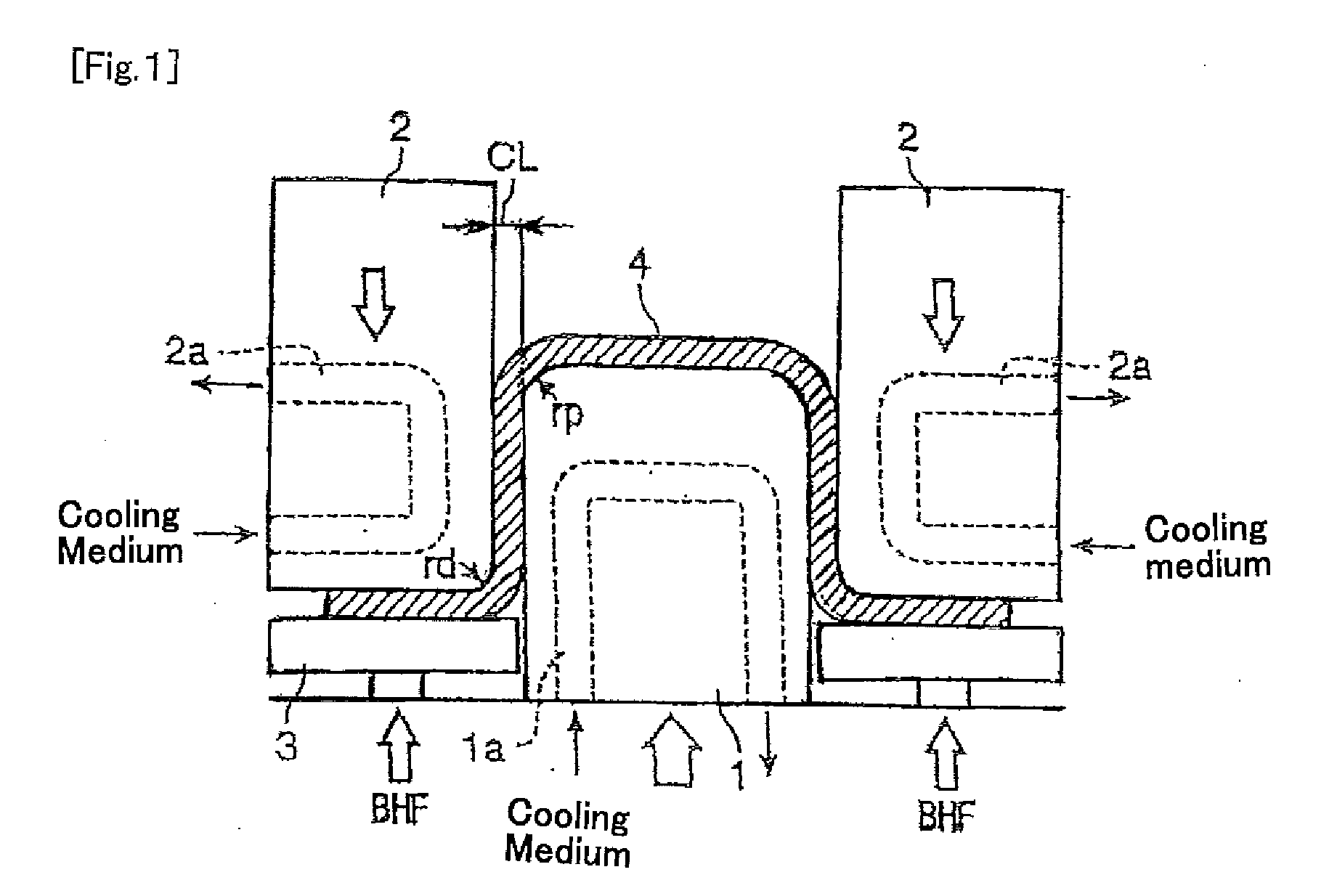Hot press-formed product, process for producing same, and thin steel sheet for hot press forming
a technology of hot press forming and product, which is applied in the direction of heat treatment equipment, furnaces, shaping tools, etc., can solve the problems of deterioration of press formability or shape fixability, steel sheet springback decline, and almost no application of steel grades other than 22mnb5 steel, etc., to achieve enhanced ductility, strength and elongation, and retain ductility
- Summary
- Abstract
- Description
- Claims
- Application Information
AI Technical Summary
Benefits of technology
Problems solved by technology
Method used
Image
Examples
examples
[0073]Steel materials having respective chemical element compositions shown in Table 1 below were formed into slabs for experimental use by a vacuum fusion method, after which the slabs were hot rolled, followed by cooling, and then wound. These rolled sheets were further cold rolled into thin steel sheets. In Table 1, Acs transformation point and Ms point were determined respectively using formulas (1) and (2) described below (see, e.g., the Japanese translation of “The Physical Metallurgy of Steels” originally written by William C. Leslie, published by Maruzen, 1985).
Ac3transformationpoint(°C.)=910-203×[C]1 / 2+44.7×[Si]-30×[Mn]+700×[P]+400×[Al]+400×[Ti]+104×[V]-11×[Cr]+3.15×[Mo]-20×[Cu]-15.2×[Ni](1)Mspoint(°C.)=550-361×[C]-39×[Mn]-10×[Cu]-17×[Ni]-20×[Cr]-5×[Mo]+30×[Al](2)
where [C], [Si], [Mn], [P], [Al], [Ti], [V], [Cr], [Mo], [Cu], and [Ni] indicate C, Si, Mn, P, Al, Ti, V, Cr, Mo, Cu, and Ni contents (% by mass), respectively. When some element indicated in a certain term of form...
PUM
| Property | Measurement | Unit |
|---|---|---|
| temperature | aaaaa | aaaaa |
| temperature | aaaaa | aaaaa |
| tensile strength | aaaaa | aaaaa |
Abstract
Description
Claims
Application Information
 Login to View More
Login to View More - Generate Ideas
- Intellectual Property
- Life Sciences
- Materials
- Tech Scout
- Unparalleled Data Quality
- Higher Quality Content
- 60% Fewer Hallucinations
Browse by: Latest US Patents, China's latest patents, Technical Efficacy Thesaurus, Application Domain, Technology Topic, Popular Technical Reports.
© 2025 PatSnap. All rights reserved.Legal|Privacy policy|Modern Slavery Act Transparency Statement|Sitemap|About US| Contact US: help@patsnap.com



